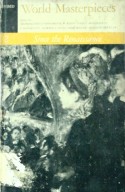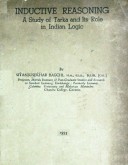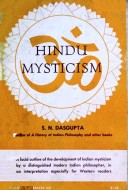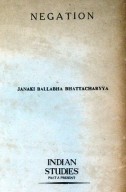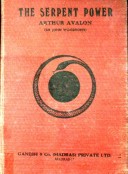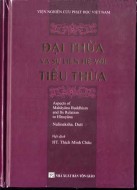Tìm Sách
Sách tiếng Anh-English >> Jesus’ Tomb In India-The Debate on his Death and Resurrection
Thông tin tra cứu
- Tên sách : Jesus’ Tomb In India-The Debate on his Death and Resurrection
- Tác giả : Paul C. Pappas
- Dịch giả :
- Ngôn ngữ : Anh
- Số trang : 193
- Nhà xuất bản : Asian Humanities Press-California
- Năm xuất bản : 1991
- Phân loại : Sách tiếng Anh-English
- MCB : 12100000011634
- OPAC :
- Tóm tắt :
PREFACE
The figure of Jesus has been mysterious and highly controversial through the years, primarily because Jesus has been proclaimed by most of his followers as the Son of God and divine in nature. However, Jesus of the New Testament and of the Christian tradition is a complex figure because he is the product of a Judaeo-Greek-Easrern milieu and of a synthesis of many past ideologies or religious views. Inconsistencies that scholars have discovered in the details of the New Testament writings and later insertions that were made in the gospels have given rise to many controversies, especially over Jesus’ death and resurrection. Great suspicion has existed up to the present about Jesus’ aim or role in Palestine, and countless books have been written debating whether Jesus the Messiah, the Davidic King, was a political or a religious leader and whether or not he really died on the cross. The absence of a body in the empty tomb has given rise to many questions and answers. The prevailing Jewish view is that Jesus’ disciples simply moved the body and hid it elsewhere. But if Jesus was indeed seen alive after his crucifixion, a question remains about his newly adopted land. Where did he go to live and die undetected? The answer given in one of the gospels, that Jesus ascended to heaven, is not taken seriously by most scholars. Although devout Christians generally accept Jesus’ ascension, the issue remains controversial among biblical scholars. Interestingly, the Muslims, who deny Jesus’ divinity and resurrection, accept his ascension to heaven. The general Muslim view appears to be that Jesus did not die while on the cross, but was taken up by God directly to heaven. But whether or not Jesus actually died on the cross is rather difficult for the Muslims to answer, primarily because the Koran is rather vague and subject to interpretation.
One Muslim sect, however, the Ahmadiyya, asserts that Jesus did not die on the cross, but was brought down alive and restored to health by his friends. The founder of the Islamic Ahmadiyya movement, Hazrat Mizrat Ghulam Ahmad, and his followers, the Ahmadis, have defended the thesis that Rozabal, the Tomb of Yuz Asaf, in Srinagar, India, is really the tomb of Jesus. They have produced both literary and archaeological evidence to prove that Yuz Asaf was Jesus Christ, who, after his crucifixion, went to live and die in Kashmir, in northern India; and they are confident that they have found Jesus’ final resting place.
This work critically reviews the Ahmadi thesis and seeks to assess the facts on which they base their contention. Unfortunately, the tomb of Yuz Asaf has not yet been scientifically examined to the present, and although a few publications have appeared in Asia and Europe, nothing has been published in America to arouse the interest of the public and especially of archaeologists and anthropologists who may want to search out the facts. Such an examination by scientists would be fascinating because it is possible that Yuz Asafs grave does date from the time of Jesus. Possibly a comparative study could be made of the occupant’s physical remains, if any, and the image depicted on the Shroud of Turin. Through correspondence with the Director of -Tourism of the state of Kashmir, this author has discovered that the grave of Yua Asaf appears to be ancient and could date back to the first century.
The Greek Orthodox Christians, however, insist that they have the genuine empty tomb of Jesus in Jerusalem, and that every year Jesus’ divinity and holy resurrection are verified by the miracle of the Holy Light. Thus far, no scientific study has been conducted of this I great miracle of Orthodox Christianity and very little is known about it in the West. With the exception of a few works in Greek, nothing specifically has been published in this country on the miracle of the Holy Light However, this author has been assured by his Beatitude, Diodorus, the Greek Orthodox patriarch of Jerusalem, through his chief secretary, Bishop Timothy of Porphyroupolis, that this significant miracle indeed does take place once every year. There is a great need, therefore, to arouse the Western world’s interest in this wondrous miracle and, if possible, to examine it scientifically. At least scientists could determine whether or not there is a natural explanation for this great event.
I would like to express my gratitude to Theohari (Harry) Papa-dopoulos, graduate of West Virginia Institute of Technology and now candidate for the Ph.D. in chemical engineering at Stevens Institute of Technology (Hoboken, New Jersey), for his help and enthusiastic encouragement as I wrote this book. I am most grateful to his Beatitude, Patriarch Diodorus of Jerusalem and Bishop Timothy, as well as to Rev. Stanley s. Harakas of the Greek Orthodox Holy Cross Seminary (Boston) for their prompt help in this endeavor. I extend my deep appreciation to Patrida A. Butenis, Consul at the American Embassy in New Delhi, ro the Director of Tourism of the state of Kashmir, to Adam Smith, my former student, and to George Allen, a fellow church member. In addition, I wish to thank for their assistance Drs. Lynda Ann Ewen and Mostafa Shaaban, and the Faculty Research Committee of West Virginia Institute of Technology. Last, but not least, I would like to thank my wife Pamela for her support and patience in this arduous task.
CONTENTS
Preface
- The Complex and Mysterious Christian Origins
- The Debate over Christ’s Death and Resurrection
- Islam, the Ahmadiyya Sect and Rozabal (the Tomb of Yuz Asaf or Jesus)
- Was Yuz Asaf Jesus?
- The Shroud of Turin and the Ahmadis, the Holy Light of Jerusalem and the Need for scientific Research
Notes
Bibliography
Appendix A
Appendix B
Appendix C
Index
 Facebook
Facebook
 Google
Google
 Google+
Google+



